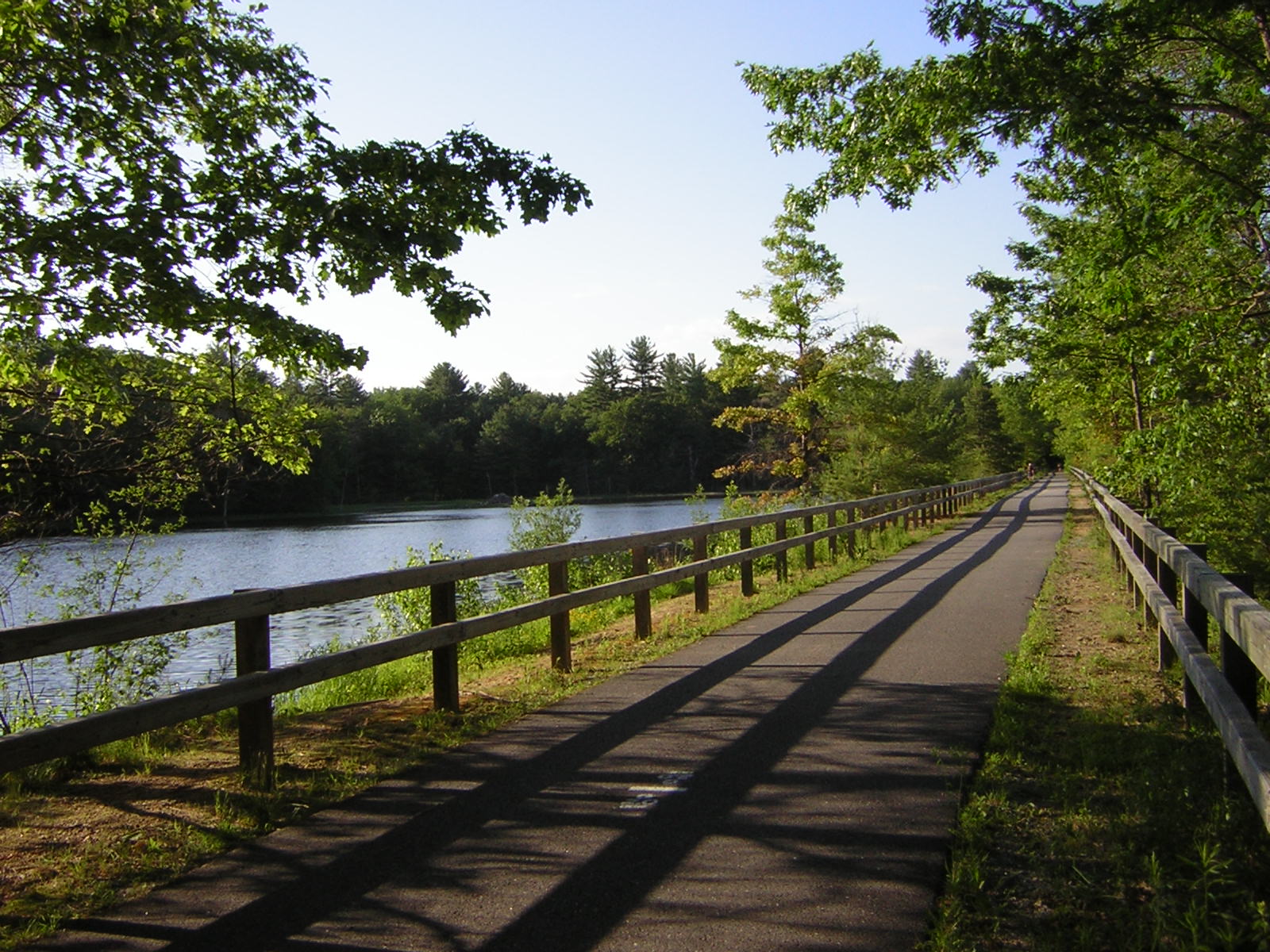While footpaths are nothing new to America, one particular type of trail has flourished since the 1980s: the rail trail. These accessible multi-use paths follow the tracks of disused railroad lines, bringing recreation opportunities to communities throughout the States. In Freedom’s Way National Heritage Area, rail trails are a lesson in both successfully preserving land and repurposing it to meet the needs of a modern culture.
With very few exceptions, most rail trails in the Heritage Area are remnants of the Boston and Maine Railroad (B&M). Chartered in 1835, the B&M boomed alongside New England’s mill industry. The “gold rush nature of railroad development,” as author Chuck A. Flink called it, meant railroads expanded rapidly into any available market. But this expansion proved overambitious. Following World War II and the widespread adoption of automobile and air travel, both railroad shipping and ridership declined. The B&M fared somewhat better than its contemporaries when it came to ridership, but its costly acquisition of the Fitchburg Railroad had drained resources, and by 1958 the railroad was deemed unprofitable.
In 1980, faced with a staggering number of unprofitable railroads, Congress passed the Staggers Rail Act. This deregulation allowed railroads to shed non-lucrative routes. In the following years, between four and eight thousand miles of rail line were abandoned per year.
Fearing these once-crucial rail lines would be lost to history, a group of young lawyers, lobbyists, and real estate specialists pushed Congress to amend the National Trails Systems Act and create a railroad “bank.” The concept of railbanking, adopted in 1983, essentially allows sponsoring organizations or agencies to use inactive corridors as interim trails while preserving their potential for future railroad use.
Communities in Freedom’s Way NHA quickly adopted this idea. State Representative Bruce N. Freeman of Chelmsford, Massachusetts began advocating for a recreational trail along the Penn Central railroad line in 1985. Upon Freeman’s death in 1986, his successor, Carol C. Cleven, introduced a bill that officially established the Bruce Freeman Rail Trail which traverses the communities of Lowell, Chelmsford, Westford, Carlisle, Acton, Concord, Sudbury, and Framingham.
Other local sponsors soon followed suit. The Massachusetts Department of Conservation and Recreation (DCR) purchased the Hollis Branch of the B&M corridor in 1987 and officially dedicated the Nashua River Rail Trail connecting Ayer, MA and Nashua, NH (via Groton, Pepperell, and Dunstable) in 2002.
Residents of Bedford, Lexington, Arlington, and Cambridge had eyed the Lexington and West Cambridge Railroad/Middlesex Central Railroad for railbanking a full seven years before service was discontinued in 1981. Construction on this popular commuter path began in 1991, and the Minuteman Bikeway was inducted into the National Rail-Trail Hall of Fame in 2008.
Railbanking also saved the corridor of the Massachusetts Central Railroad, which was demolished by the Great Hurricane of 1938. Large sections lay abandoned for decades until railbanking agreements allowed the Massachusetts DCR to reimagine the corridor as a rail trail. A section of the Mass Central Rail Trail passes through Clinton, a spur of which travels north to neighboring Sterling.
Today, there are nearly a dozen rail trails throughout Freedom’s Way National Heritage Area. These once-forgotten corridors have renewed importance, providing communities with access to recreation, nature, and car-free modes of transportation. The trails are scattered with relics of railroad history: a restored 1921 B&M Railroad caboose rests along the Assabet River Rail Trail in Hudson, MA, and glimpses of mill sites can still be seen along the Squannacook River Rail Trail in Townsend and Groton. And yet, many of the region’s rail trails are slated for extension — promising that the newfound purpose of these corridors will serve communities well into the future.
Sources: Railstotrails.org, dirt.asla.org

